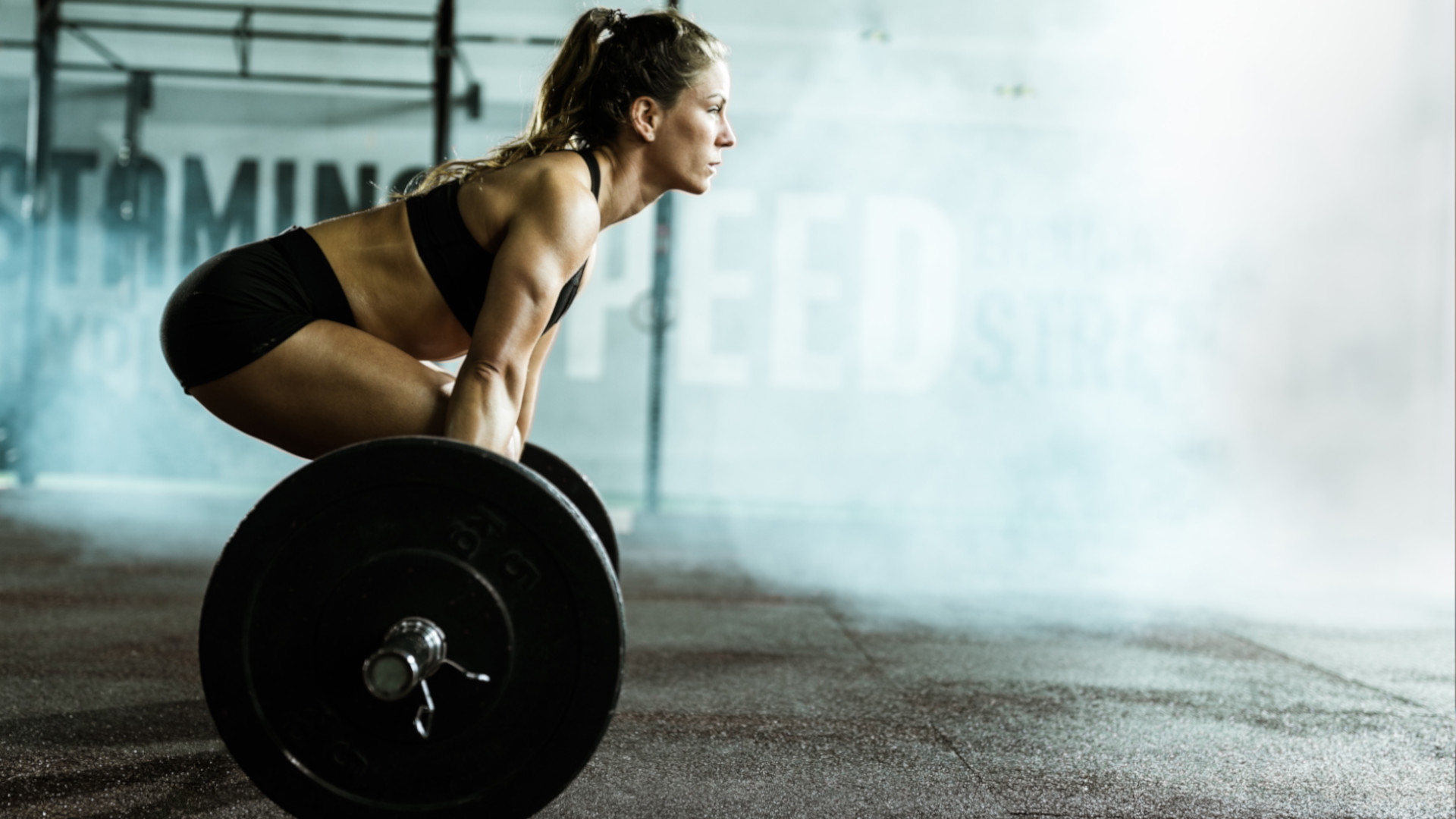I did deadlifts with a professional powerlifter – five things I learnt
From how to hold the bar correctly to squirting Lucozade on the comp floor


I love my job as an Active Writer, but what does it for me is the amazing people I get to meet and learn from along the way. Last month it was working out with Jennifer Muir, the Fittest Women in the UK. This month British powerlifter Sophia Ellis, who competes and coaches Team GB, just so happened to be at a shoe launch that I was at. When I heard she was going to be giving us a deadlift lesson, I couldn’t believe my luck – this woman is the European and British deadlift record holder (she can deadlift 245kg!). Not to mention she’s got an epic squat and bench press too.
If deadlifts aren’t currently in your training plan, what have you been doing? They’re a brilliant compound exercise that work the glutes, hamstrings, core, back and trapezius muscles. Performed with an Olympic barbell and weight plates, the deadlift can build serious muscle strength and burn fat. It’s an exercise that everyone can benefit from doing, and who better to learn how to deadlift properly than Sophia herself?
From how you should be holding the bar to knee placement and what happens on the competition floor, here’s what I learned about deadlifts with Sophia Ellis.
5 things I learned

1. Your knees should be slightly over the bar
This one took me by surprise a little because when I deadlift, my knees are usually behind the barbell. But Sophia says this can cause you to sit into more of a squat position or have your hips too high, which then forces you to pull with your back. “When deadlifting, you want to initiate the movement with your legs (thinking of pushing instead of pulling) without letting the hips go up too soon,” explains Sophia. “Having the knees slightly over the bar at the start of a conventional deadlift enables more stability through the feet and an even weight distribution across the foot.”
2. They squirt Lucozade on the competition floor
I wasn’t sure if this was a joke at first as I enjoy a Lucozade at the gym myself. But it’s true. The reason this is done is to make the floor sticky so that people don’t slip during their lifts and have more grip on the floor. There are other, let's say, questionable stuff they do to others, like putting talc powder in the chalk bowl so people can’t grip the bar properly, but let's not discus that here.
A post shared by Bryony Firth-Bernard 🤍 (@bryonyfb)
A photo posted by on
3. A bad lockout, means a bad starting position
The truth hurts people, but according to Sophia: "If you aren’t in a good starting position, you are more likely to lose your back which makes it much harder for you to lock out smoothly.” Annoyingly though, when it comes down to starting positions, there isn’t a ‘one size fits all’ blueprint, as Sophia says, everyone has different leverages and mobility.
However, you can make sure you’re doing these cues to give yourself the possible lockout: “Let the knees track over the bar slightly, make the arms long, have your shoulders slightly over the bar so that the scapula is in line with the bar; keep the chest up, look forwards, pull the slack out of the bar, brace, and then initiate the movement with the legs keeping engagement through the upper back.”
Get all the latest news, reviews, deals and buying guides on gorgeous tech, home and active products from the T3 experts
4. Hold the bar in your fingers
When Sophia had a look at my deadlift, she said I was holding too much of the bar in my hand, which changes the position of your wrists and increases the range in which you need to pull. “Having the bar lower down in the hands and a bit more in the fingers allows you to lengthen more from the start,” she says. “This enables a more upright torso position - wrists are stacked over the bar - and it decreases the range in which you need to pull. Every little bit counts when you want to lift more weight!”
A post shared by Sophia Ellis (@sophiastrength)
A photo posted by on
5. Point your toes out slightly
We're talking about with conventional deadlift by the way, not sumo. "Having the toes slightly pointed outwards opens the hips slightly and enables a bit more space for you to come down into a more comfortable starting position," says Sophia. It may be a small tip but, if it helps you move more weight, then it helps you move more weight.

Bryony’s T3’s official ‘gym-bunny’ and Active Staff Writer, covering all things fitness. She is a certified personal trainer and also a part-time fitness instructor. In her spare time, you will find her in her natural habitat - the gym - where her style of training is a hybrid of bodybuilding and powerlifting. Bryony loves writing about accessible workouts, nutrition and testing innovative fitness products that help you reach your fitness goals and take your training to the next level.